July 8, 2022
Back to the Field
After more than two years of travel restrictions and border closures, we’re happy to report that our team in Thimphu had one of our first major field visits this June. Despite the delays in travel due to the monsoon rains, we were still very excited to see our partners and communities face to face again. Today, we want to share with you all about our visit to Aja Ney, where the first results of an ambitious plan to bring power to the last .03 percent of Bhutan are underway. We also have some exciting updates from our Special Education program in Eastern Bhutan and women’s empowerment programs in Eastern Bhutan.
Solar Power to Brighten Remote Communities
Up high in the remote region of Aja Ney sits one of the most popular and religious pilgrimage sites in Eastern Bhutan. This sacred space attracts thousands of Bhutanese travelers every year. Despite its cultural significance, it is one of the only communities in Bhutan that is deprived of access to grid electricity. A combination of rugged topography, remoteness, and strict conservation regulations make equipping this community with electricity challenging. The community sits within Bumdeling Wildlife Sanctuary where felling of trees and construction of transmission lines is strictly prohibited.
Our team started the journey on a long farm road, crossing several villages, valleys, and streams. After three hours of bumpy roads, we finally reached Yarab, a small farming community. This is where our seven-hour hike to Aja Ney began. We were accompanied by a team of horses: they were loaded up heavily with batteries and materials for the new solar plants to be installed in the communities. The trail we took runs through several deep gorges along the pristine, broadleaved forest and ascends at base camp at 2,500 m (8,202 ft.) above sea level. We visited Dungkar Choeling and Pema Yang Dzong which are both solar project sites and day trips from the base camp.
Needless to say, our team was tired after we arrived late that day! This project, however, is a deeply relevant one, and has been a long time coming since COVID-19 halted movement in early 2020. This program was initiated with a partnership between the Bhutan Foundation, the Bhutan Ecological Society and the Department of Renewable Energy (DRE) of the Royal Government of Bhutan. Our common goals to provide clean and renewable energy in these communities brought the synergies of the three organizations together.
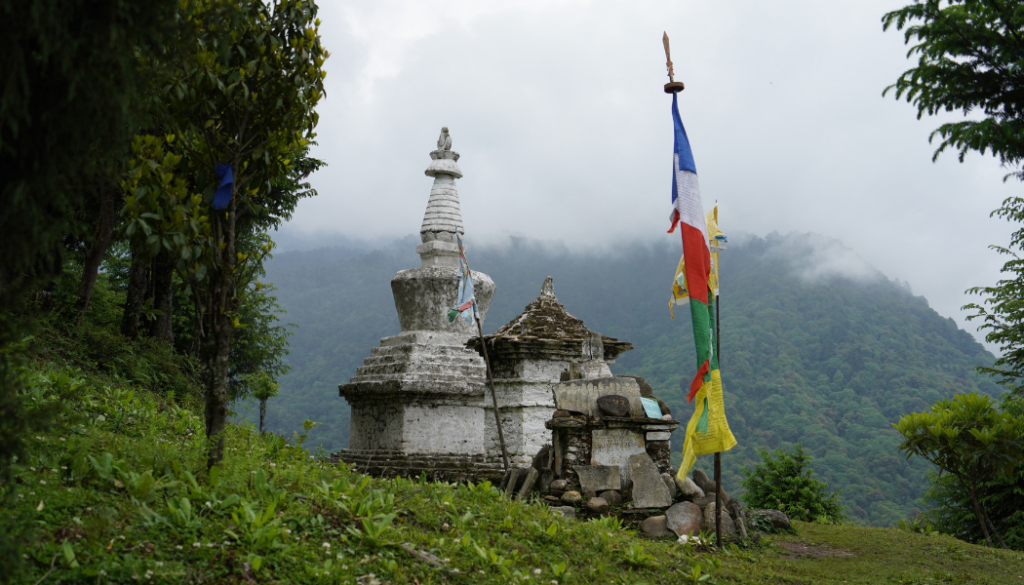
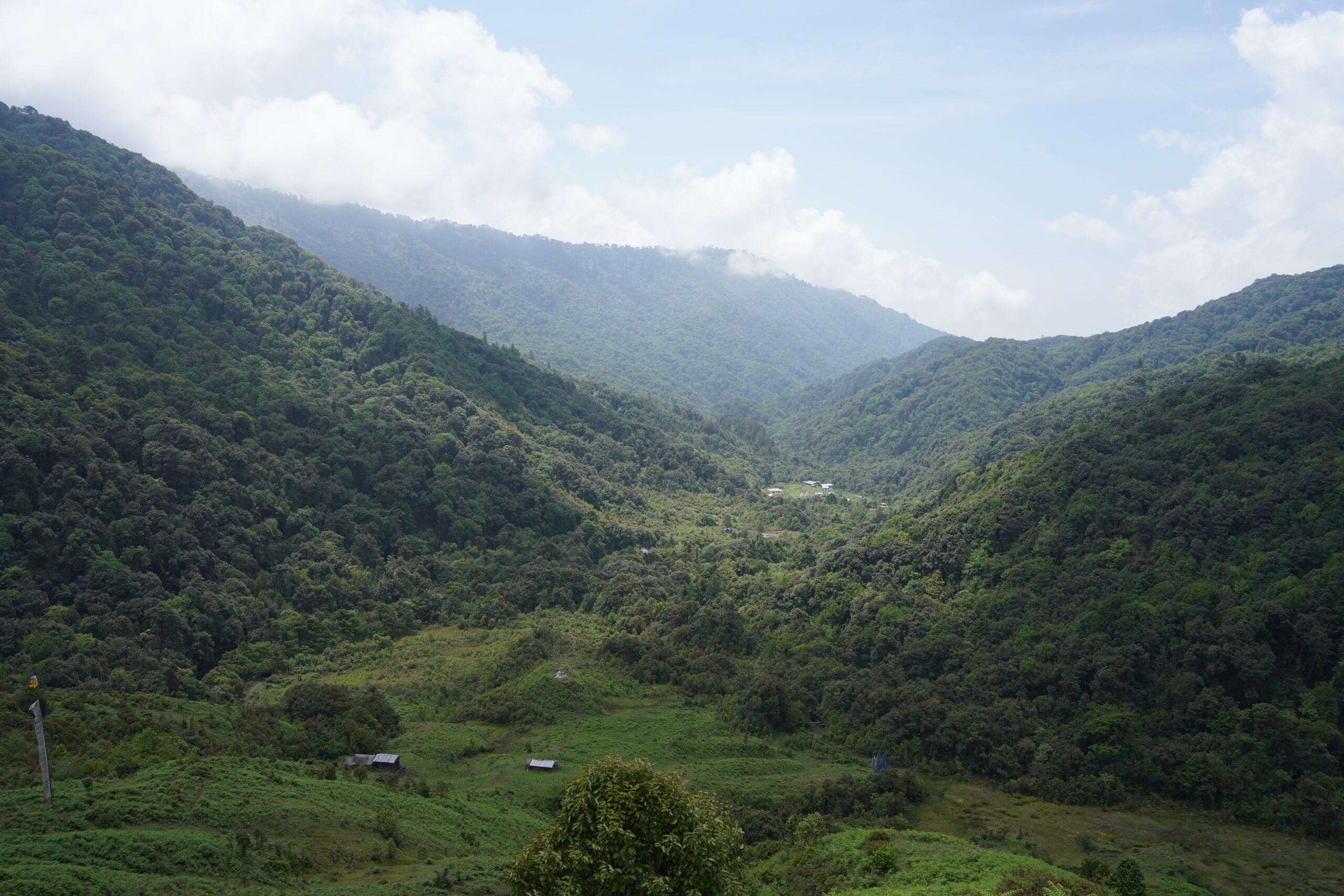
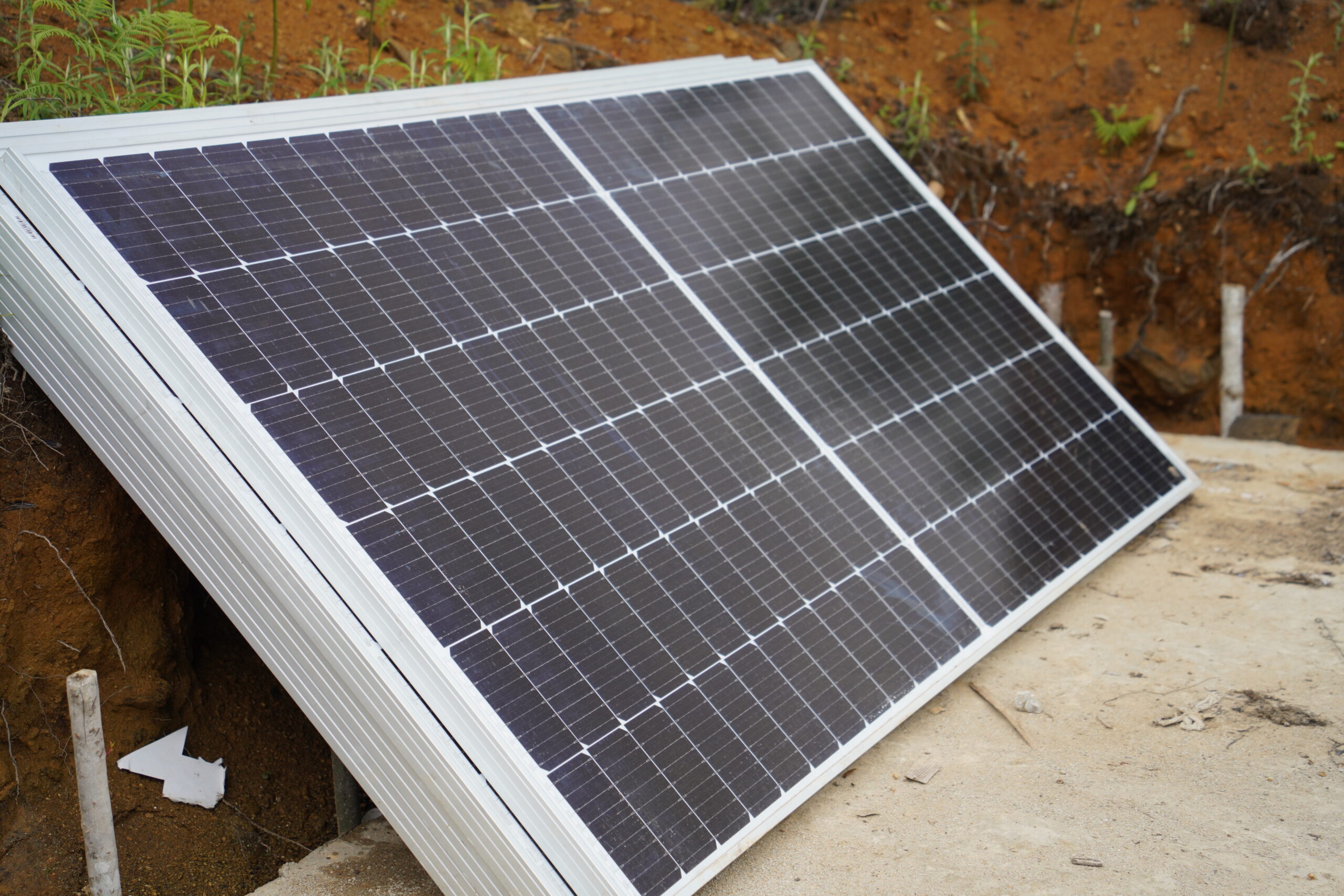
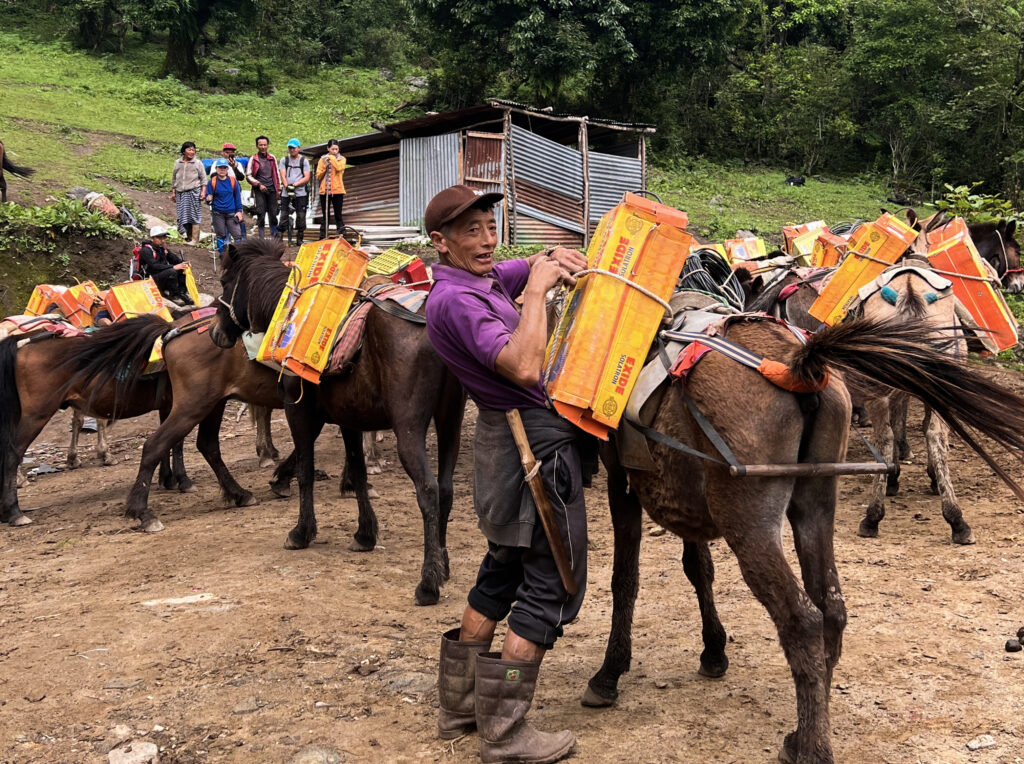
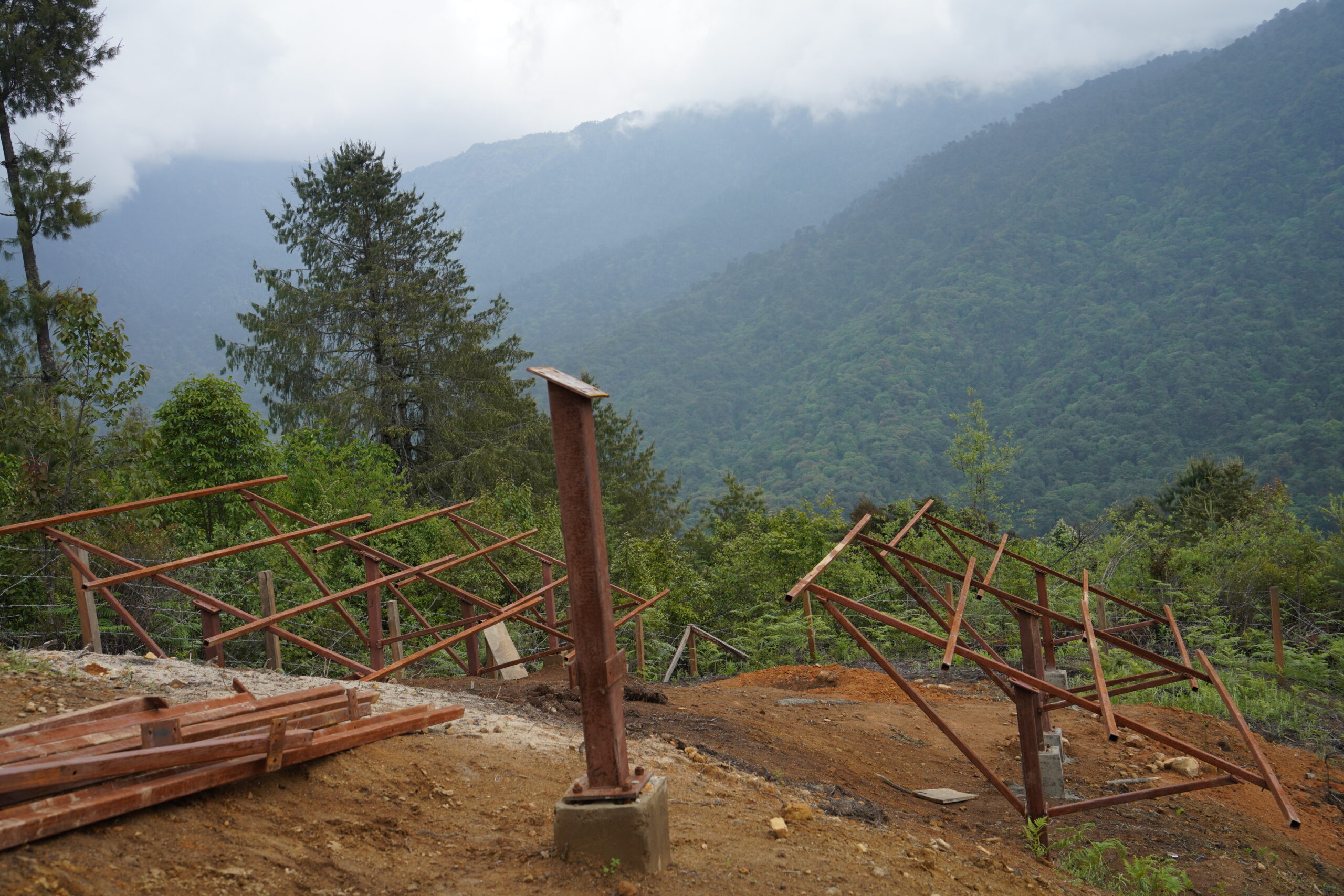
During our visit, we noted that the project is progressing well on the ground, with all civil works, including the clearing of the land, fencing of the plant area, and installation of panel mount frames completed on two sites. The equipment, such as panels, batteries, and prefabricated board for the battery house, was in the process of being transported to the site on horseback or by people carrying them. The project officially started in July 2021 and, despite setbacks due to the pandemic, is expected to be completed by August 2022.
The 30-kW solar power plant aims to provide electricity to more than 24 households, including temples, guesthouses, and retreat centers. Once completed, it is expected to reduce pressure on the forest resources and improve livelihoods by reducing dependence on both manual labor and resources from the forest for cooking and heating, negatively impacting community health and the environment.
It was heartening to see community members excited about the new solar plant. The people we met were grateful for this support and feel their hopes for better alternatives for power have finally been fulfilled. In the words of a local leader, Dzongpon Damcho Dorji (33) of Pema Yangdzong, “Solar photovoltaic plants are very important for us here. We need lighting and heating all the time. As we had wished and prayed, the solar plant is now finally here. We are so happy and excited!”
“With the current solar plant, we can use rice cookers and curry cookers and even utilize electric heaters. As we don’t have to collect firewood for heating and cooking, this will also reduce the cutting of trees from the forest. This will indeed make a huge difference in improving our overall livelihoods.”
Special Education Program in Mongar
Following our hike to Aja Ney, the team also stopped to visit a local school in Mongar with a special education program.
The school has about 44 students with mild to severe disabilities and most of the students are in pre-primary grades. Apart from the inclusive session with the mainstream classes, the school’s teachers also offer pre-vocational classes for children with disabilities. These classes provide daily living skills such as cooking, washing, and tailoring training.
During the visit, we spoke one-on-one with teachers and administrators to discuss the current facilities for children with special needs in the school. The teachers shared plans to renovate some existing classrooms for the SEN (Special Educational Needs) classes. They are also planning to construct accessible ramps for the children with special needs that would connect to the common facilities of the school–making the environment much more inclusive and accessible. We were heartened to hear of these plans and are looking deeper into how our team can support the efforts at the school. The Bhutan Foundation continues to support the school in the capacity development of SEN teachers and parents of children with special needs in collaboration with Perkins International.
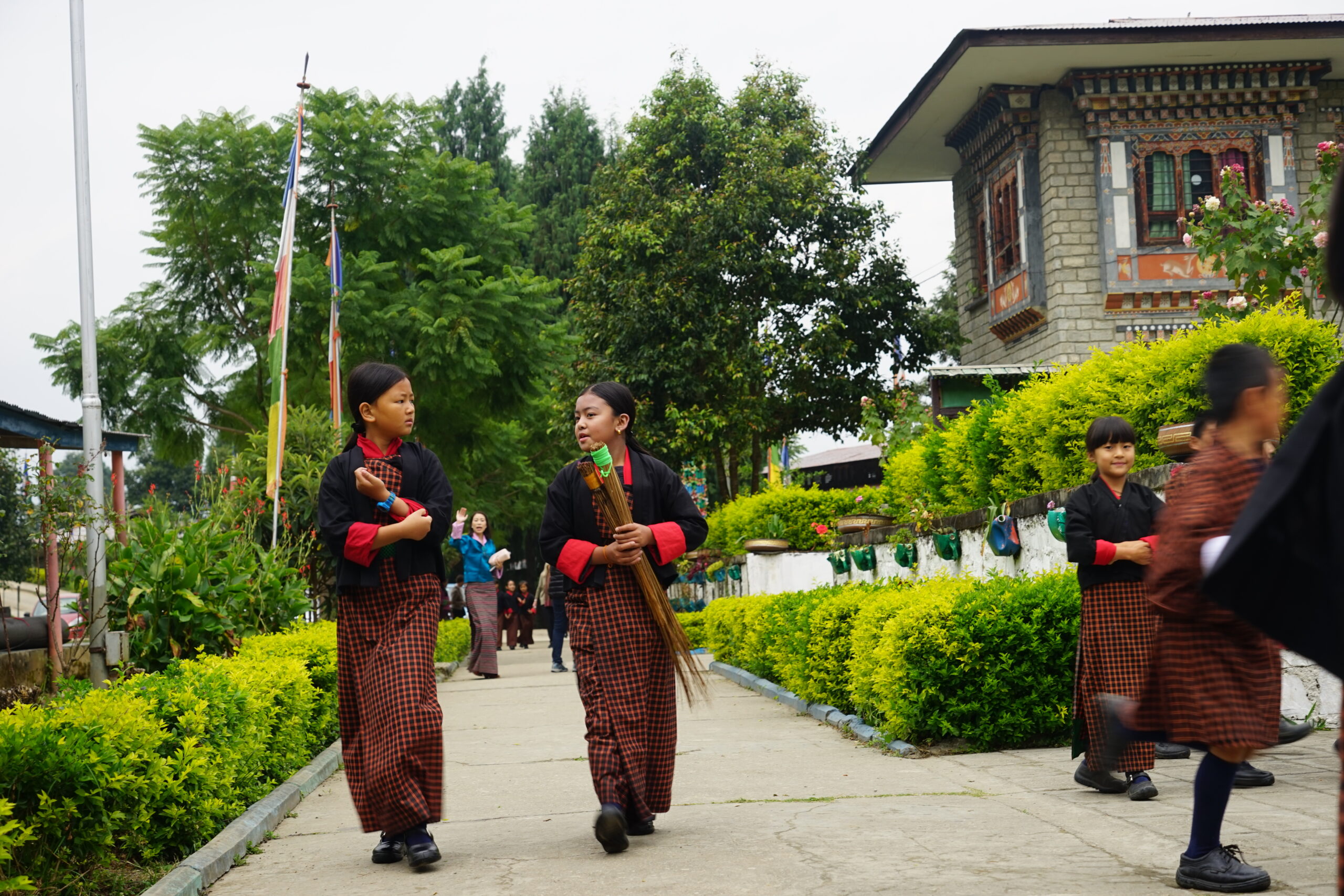
Women Lead the Charge in Trashi Yangtse
On our next stop, we met with some community members of a women-focused community group in Bumdeling, Trashi Yangtse, in Eastern Bhutan. The Bhutan Foundation supported the purchase of a dehydrator in partnership with the Bhutan Association of Women Entrepreneurs (BAOWE) for this community. During our visit, the community members were using the dehydrator to dry fresh vegetables, in particular, chilies–which was timely as Bhutan’s monsoon season (June-August) was just around the corner.
Ms. Phurpa Wangmo (41), one of the community members we met, was using the new dehydrator and told us, “every harvest season, we had issues drying chilies as the harvest time falls during peak monsoon. Large amounts of the extra harvest would go to waste. But now, with an electric dehydrator, we can dry our extra produce of chili and other perishable vegetables year-round. With the uncertainty that comes with planning around weather, we are confident that our hard work will not go in vain with the new dehydrator.”
For women like Phurpa Wangmo, vegetables are everything. More than that, chilies are everything. The spicy staple of everyday diet in Bhutan, chilies are found in just about every dish, from ema datshi to a regular garden salad. It’s no wonder chilies are also a primary source of income for families in Tashi Yangtse that rely on their harvests to make ends meet.
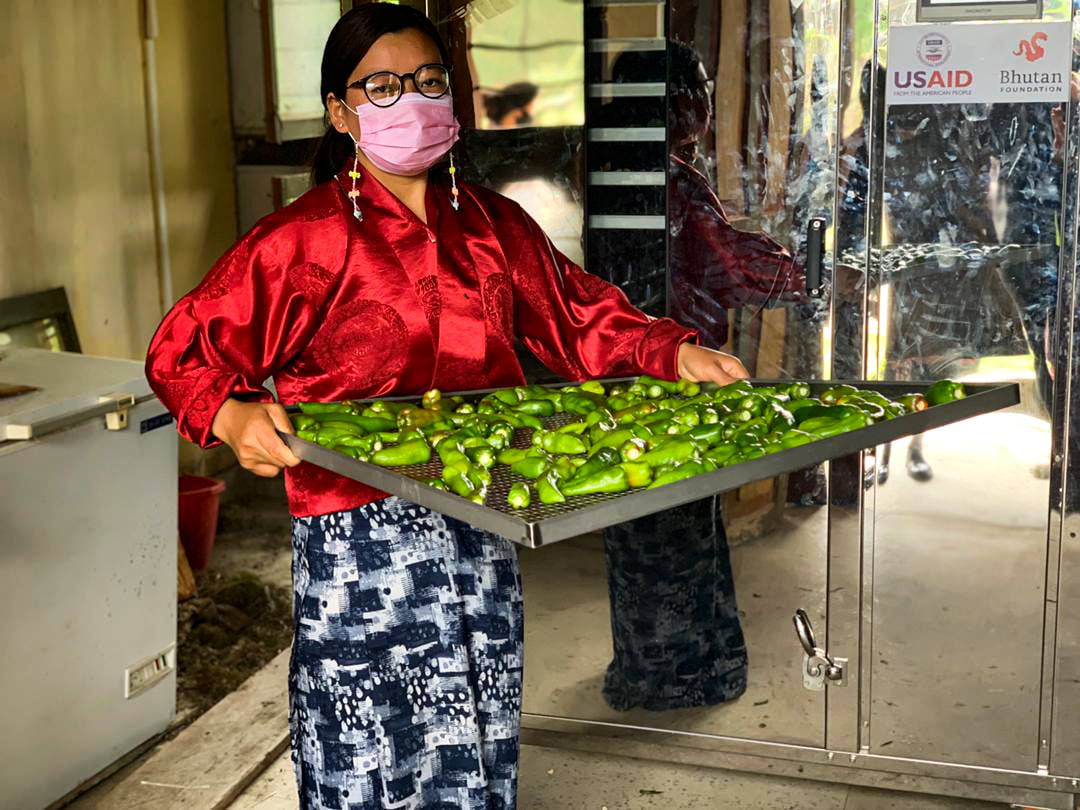
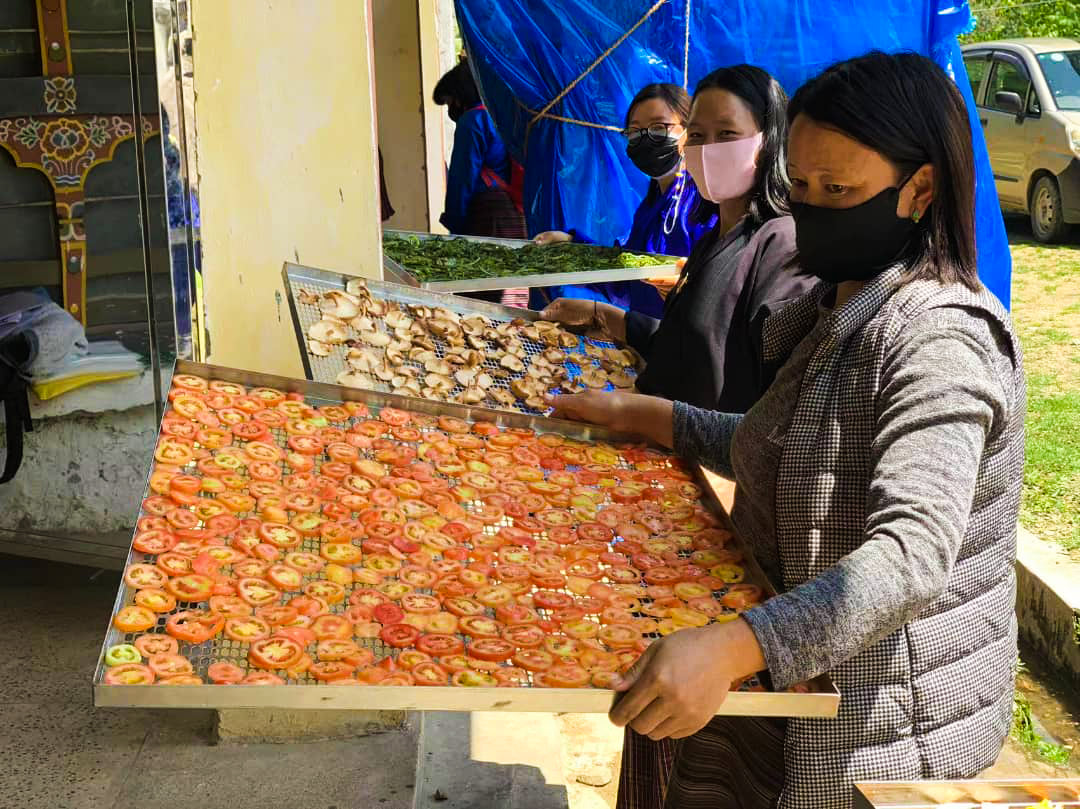
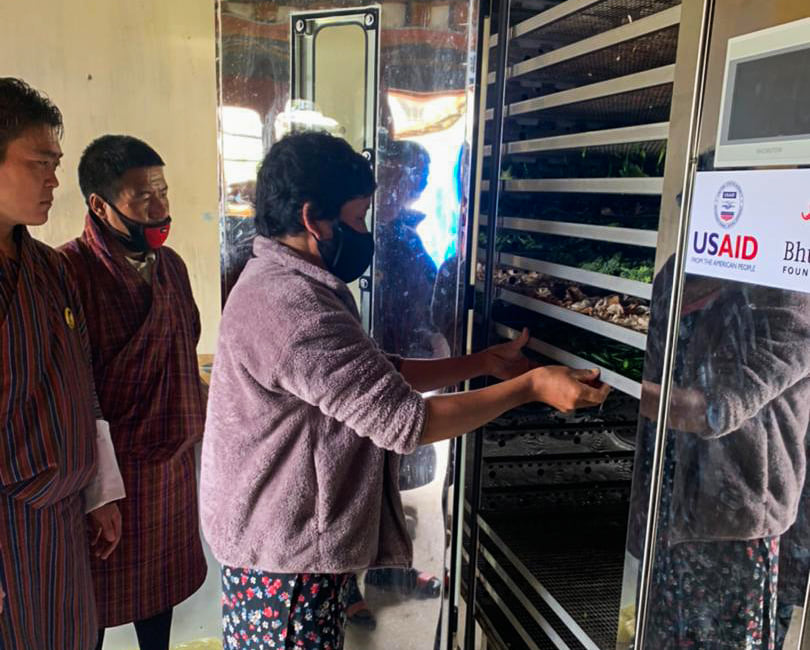
It’s not uncommon to see hundreds of dried chilies laid out on roofs and tiles to dry in the sun for safe storage. It’s a picturesque site but one that is unsustainable year-round. As July hits the calendar, parts of Bhutan are also hit with harsh monsoon rains that flood rivers and make drying and storing vegetables nearly impossible. The loss of income and regular food availability makes a deep impact on community wellness.
During our visit, the excitement was tangible in the community. We had several discussions with local members about the positive changes to their daily workloads and the group’s increased sales opportunities for the coming off-season. Monsoons are just around the corner this month, and already the group has begun preparing to dry produce. This dehydrator will serve about 146 households in the village.
We are keeping a close eye on the project and are looking forward to reporting just how well the sales turn out later this summer. One thing’s for sure, the entrepreneurial spirit of the Tashi Yangtse women’s group will make a big impact with their new tool this year. With this project’s success, we hope to see more innovations coming from local communities.
We hope this report from our recent field visits inspires you as much as it did us! It was heartwarming to see the impact our support is making on the ground. This impact would not be possible without the support of our donors like you. So, thank you for making this possible and always supporting our mission.
We look forward to more visits to our project sites now that Bhutan is opening up. And we hope you will join us soon as well!
Warm regards,
